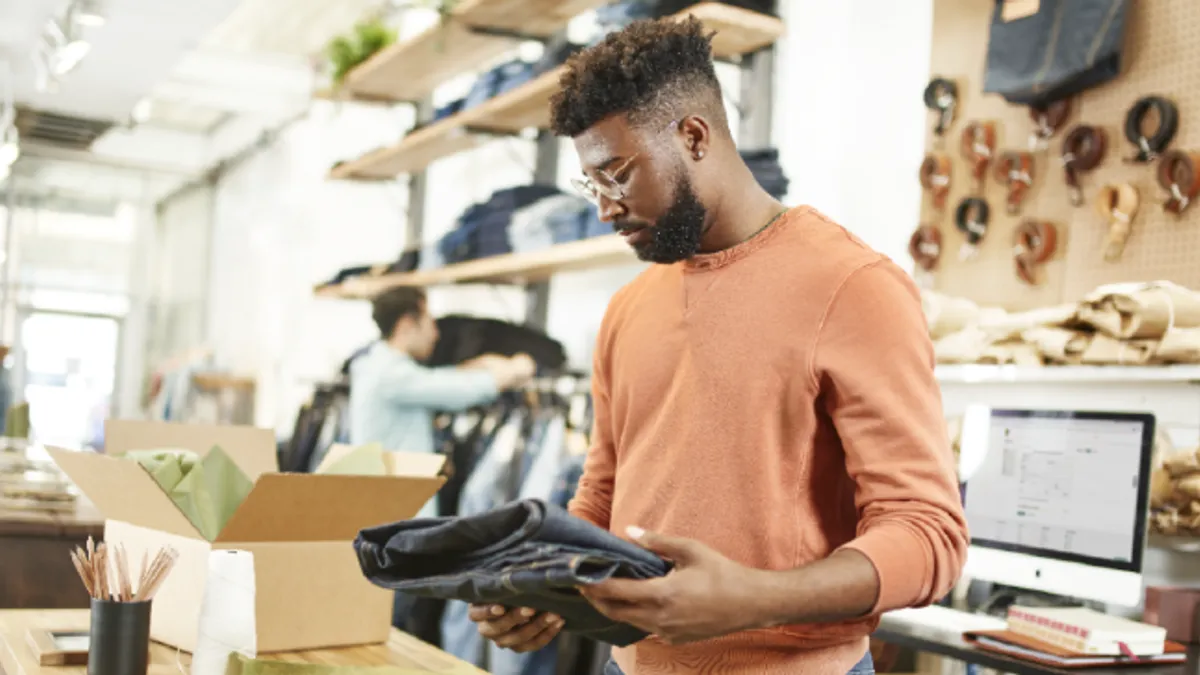By all accounts and measures, retailers have cause for optimism. Despite rising inflation, eCommerce sales grew 50% over the course of the pandemic, to the tune of nearly $870 billion. As this trend continues, consumers are poised to engage with their favorite brands unlike ever before.
While the industry has been invigorated by this pandemic-era growth, it's also undergone structural change, where a long-running emphasis on exceptional customer experience has collided with unprecedented demand for digitally-driven options. Without embracing both, retailers risk alienating customers. But how, explicitly, are evolving expectations manifesting?
UPS Capital recently published a report, Personalized Shipping Experiences: The Next Frontier for eCommerce, addressing consumers' concerns and desires. Surveying 1,000 U.S. consumers age 18+ and 500 U.S.-based small and medium businesses (SMB) on shipping experience preferences, this report is designed to explore how and where expectations have evolved, and to identify the greatest areas of opportunity for retail and eCommerce business owners to win with customers and improve their bottom line.
Here's what the data found:
Personalized shipping stands out
Digitally-driven personalization is not a new phenomenon in retail. Direct-to-consumer brands have proven the market value of hyper-personalized shopping across online channels. There is, however, an opportunity to infuse personalization in a traditionally underserved area: shipping.
Our research found that of those polled, 87% of consumers would be more likely to shop with a merchant if they could personalize their shipping experience. Further, 69% are willing to pay extra for the benefit of personalization. Giving consumers control over delivery tracking, picking the arrival date, or even adding the opportunity to customize with shipping insurance can make a lasting impact. While this positive response aligns with the growth of personalization in retail, there were additional findings we weren't expecting. 80% of consumers report they would prefer shipping personalization options over two-day or free shipping. Once considered the gold standard in eCommerce, this shows that consumers are re-thinking the perks of free or fast delivery and looking for more oversight over their shipments.
This shift reveals the extent to which personalization now reigns. Reorienting shipping experiences accordingly helps foster and grow a loyal customer community, a key priority for retailers.
Drop-shipping & the risk/Reward factor
Many SMBs are exploring new ways to improve efficiency in their processes. What we found through our research was a pointed increase in drop-shipping practices – a cost-effective fulfillment solution managed between the consumer and supplier. 86% of SMBs reported either a significant or slight increase in the use of drop-shipping since early 2020. By cutting themselves from the middle, businesses no longer need to invest in inventory or shipping infrastructure.
There are, however, risks involved. By shifting shipping responsibilities to the supplier, retailers sacrifice visibility into quality control yet remain on the hook should there be damage. 66% of SMBs said that they experienced more loss, theft or damage with drop shipments compared to those sent directly. In an industry with tight profit margins and even tighter margins of error, finding the right balancing act between risk and reward is vital. Mitigating that risk, particularly through shipping insurance, can provide peace of mind despite a volatile supply chain, and help buffer against negative experiences.
An increasingly diverse eCommerce environment
As the pandemic settles and consumers fall into new spending patterns, SMBs are balancing a multi-channel strategy for in-store and eCommerce options. In fact, the research found 85% of SMBs sell 25% or less of their revenue through brick & mortar. But eCommerce is not a unified marketplace.
Expectedly, 93% of SMBs cited Amazon as their most utilized marketplace. Interestingly, however, it was immediately followed by 87% choosing Facebook, and 81% choosing Instagram. While social commerce is still developing – only a quarter of consumers said they were likely to do any shopping on Facebook – multi-channel selling strategies have clearly earned SMB's attention. Many businesses are placing big bets that growing familiarity and changing behavioral habits will lend to positive shopping experiences, particularly as the platforms themselves mature.
Between personalization, customization and a multi-channel marketplace, there are many opportunities for the shipping experience to differentiate a SMB. Visit now to explore the key findings and find out how they might impact your business.










